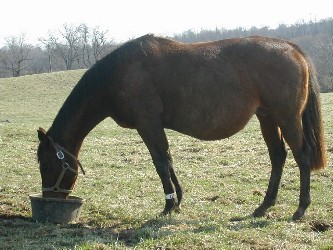It is extremely important to keep accurate records of each mare’s reproductive status. Breeding, teasing, palpation, and health records are examples of some of the essential record types necessary to assist in attaining maximum productivity. Breeding records should include mare identification, breeding dates, health comments, and expected and actual foaling dates. Health records should identify the date and description of health care, including the person who administered it. The teasing record includes identification of the mare, teasing dates, teasing codes corresponding to the teasing dates, and other information, such as treatment records and dates bred.
Records should include the year, the name, color, and age of the mare, and the farm number. On large farms, it is a common practice to assign individual mares a numbered neck or leg band. Neck bands help in quick and accurate identification of each mare. Records should also identify the stallion the mare is booked to, the mare’s owner and previous breeding results.
Each mare should have a record to document changes in breeding status and procedures. It should contain a daily calendar to record this information.
Symbols are used on records to indicate breeding activities. Dates of arrival to and departure from the farm determine mare care charges. Foaling dates indicate the expected time the mare will be in foal heat or subsequent cycles. Recording the mare’s breeding procedures assists in scheduling heat detection, breeding, pregnancy determination, and veterinary treatments. In addition, recording the dates she was bred provides information to estimate time of foaling.
Mares cycle about every 22 days during the breeding season. As ovulation nears, most mares are more receptive to stallions. This heat period lasts three to seven days. A mare’s sexual receptivity is documented with teasing codes. The codes rate mares on a scale of 1 to 5. A ‘1’ indicates a mare is resistant to the teaser stallion and a ‘5’ means she shows strong, visible signs of heat. Recording the mare’s response to teasing determines her heat cycles and time of breeding.



